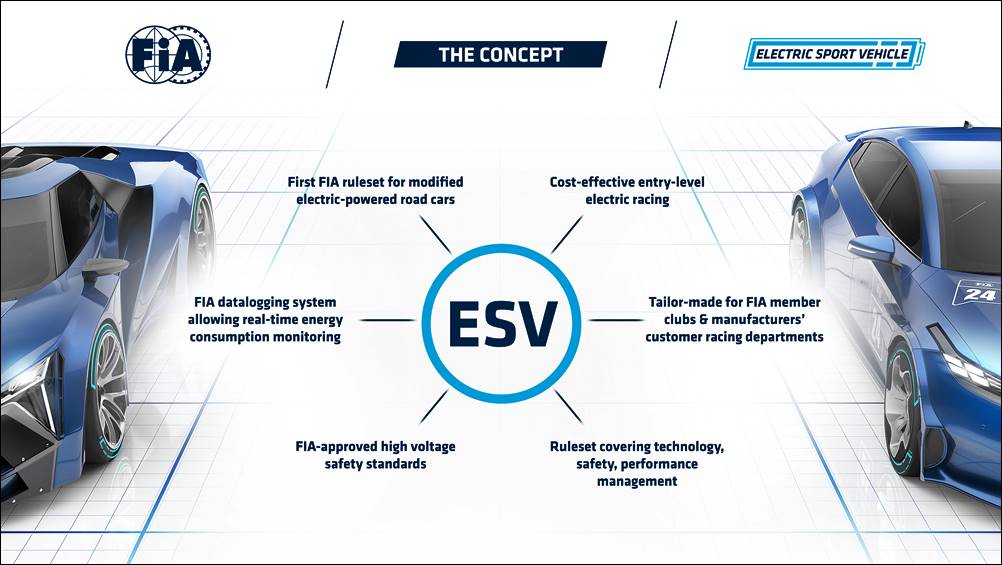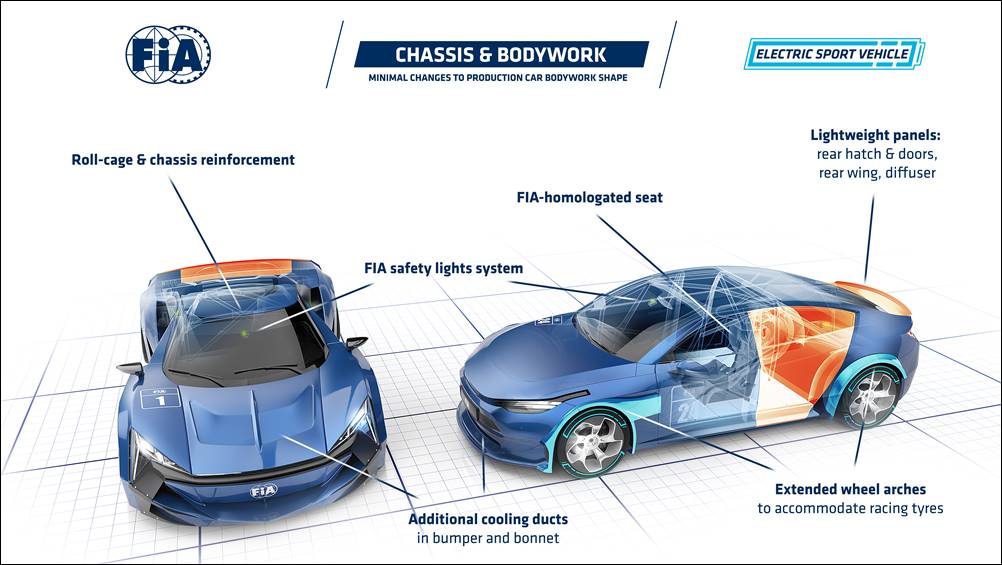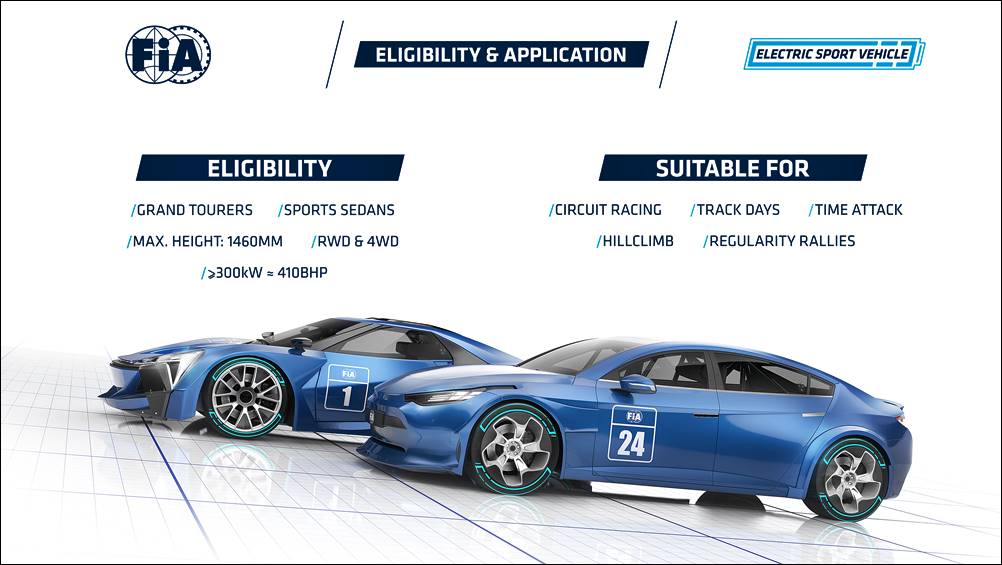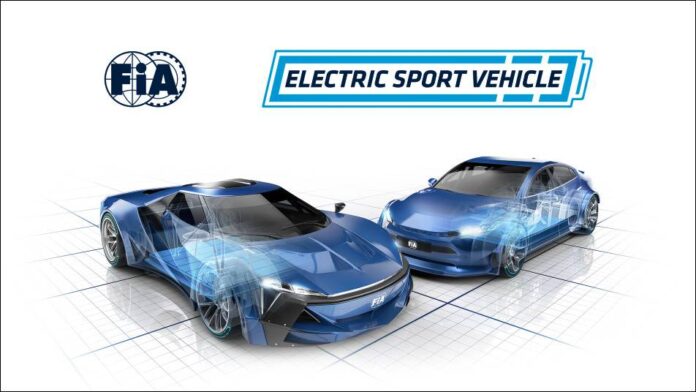The FIA has announced a new set of Technical Regulations for Electric Sport Vehicles (ESV), the Federation’s first-ever ruleset for electric-powered vehicles. These are closely derived from road-going production cars and destined for competitions at national and regional levels
The FIA ESV ruleset is designed to allow affordable, entry-level electric racing in compliance with the FIA’s standards for high-voltage safety. The regulations cover both technology and safety, with performance management also an option depending on competition requirements.

Mainly for FIA member clubs
The primary target recipients for the FIA ESV regulations are FIA member clubs, in order to grow safe and sustainable motorsport for the future. The unique advantage of this new ruleset is that it enables the same car to be used across a variety of different sporting formats – from circuit racing to various sprint-type events, including those that require vehicles with road-legal homologation, consequently allowing competitors to drive to and from the actual events.
The ability to offer modified electric vehicles ready for competition and built in conformity with recognised FIA regulations will enable the manufacturers to offer cars ready for competition straight ‘out of the box’.

Group N spirit
Much like the Group N of the past, the objective of the FIA ESV ruleset is to have cars with minimal adaptations from the road-going production model. Reflecting the latest trends on the road car market, the class will be open to both Grand Touring cars and 4-door, coupe-shaped sports sedans, with the maximum chassis height set at 1460 mm.
As per the technical regulations, the bodywork shape must remain fundamentally unchanged, with the exception of the possibility to extend the wheelarches to accommodate wider racing tyres and additional cooling ducts. In order to save weight, selected bodywork panels, such as the rear hatch and doors, the rear wing and the diffuser, will be replaceable with equivalents made from lightweight materials but must maintain original shape.

The class is also destined for cars with a minimum production volume of 300 units over the first 24-month period from the homologation of the road car, resulting in prototype or low-production specials being ineligible. FIA ESV is open to both rear-wheel and 4-wheel drive cars, with a minimum power output set at 300 kW (roughly 410 bhp).
